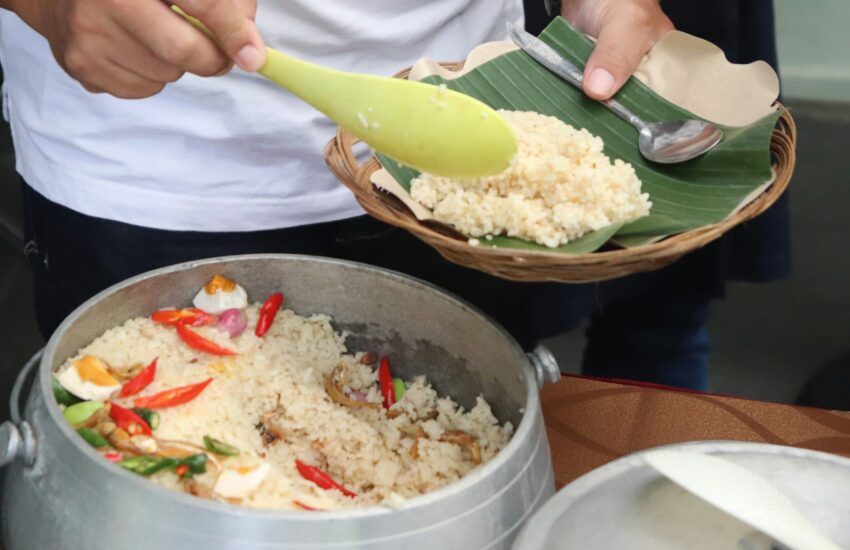The Rice Diet is a low-calorie, low-fat, and low-sodium diet plan that originated in the 1930s at Duke University in Durham, North Carolina. Initially developed as a treatment for hypertension, kidney disease, and other medical conditions, it later gained popularity as a weight loss regimen. The diet primarily focuses on consuming whole grains, fruits, vegetables, and limited amounts of lean protein. In this comprehensive guide, we’ll delve into the principles of the Rice Diet, its potential benefits and drawbacks, sample meal plans, tips for success, and considerations for weight loss and overall health. Accordingly Mohit Tandon from Chicago, Rice Diet for Weight Loss are as follows:

Principles of the Rice Diet:
- Low-Calorie, Low-Fat Foods: Firstly, The Rice Diet emphasizes consuming foods that are low in calories and fat. This includes whole grains, fruits, vegetables, and lean protein sources.
- High in Complex Carbohydrates: Secondly, The diet centers around complex carbohydrates found in whole grains like brown rice, quinoa, and barley. These carbohydrates provide sustained energy and fiber, which aids in digestion and satiety.
- Low in Sodium: Thirdly, Sodium intake is restricted on the Rice Diet to help reduce fluid retention and lower blood pressure. Processed foods and high-sodium condiments are limited, and emphasis is placed on using herbs, spices, and natural flavorings for seasoning.
- Moderate Protein Intake: While the diet is primarily plant-based, it includes moderate amounts of lean protein sources. Accordingly Mohit Tandon, these include fish, poultry, tofu, legumes, and low-fat dairy products.
- Limited Added Sugars: Added sugars are minimized on the Rice Diet to help stabilize blood sugar levels and promote weight loss. Fruits are encourage as a natural source of sweetness.
Potential Benefits of the Rice Diet:
- Weight Loss: The Rice Diet’s focus on low-calorie, nutrient-dense foods can lead to weight loss when combined with a calorie deficit.
- Improved Blood Pressure: Especially, The diet’s emphasis on whole grains, fruits, and vegetables, along with its low-sodium approach, may help lower blood pressure.
- Better Blood Sugar Control: By prioritizing complex carbohydrates and limiting added sugars, the Rice Diet may help stabilize blood sugar levels, making it suitable for individuals with diabetes or prediabetes.
- Reduced Risk of Chronic Diseases: Especially, The diet’s emphasis on plant-based foods and limited intake of processed foods may contribute to a reduced risk of chronic diseases. These include heart disease, stroke, and certain cancers.
Drawbacks and Considerations:
- Limited Food Variety: The Rice Diet may be restrictive for some individuals. This is due to its limited food choices and repetitive meal options.
- Potential Nutrient Deficiencies: While the diet emphasizes whole grains, fruits, and vegetables, it may be deficient in certain nutrients. These include vitamin B12, vitamin D, calcium, and omega-3 fatty acids found in animal-based foods.
- Not Sustainable Long-Term: The strict nature of the Rice Diet may make it challenging to maintain over the long term. This can lead to potential rebound weight gain once the diet is discontinued.
- Not Suitable for Everyone: Individuals with certain medical conditions, such as kidney disease, may need to modify the Rice Diet or avoid it altogether due to its potential impact on nutrient balance and kidney function.
Sample Rice Diet Meal Plan:
Here’s a sample meal plan based on the principles of the Rice Diet :
Breakfast:
- 1 cup cooked brown rice
- 1 medium banana
- 1/2 cup unsweetened almond milk
- 1 tablespoon chia seeds
Lunch:
- Grilled chicken breast
- Mixed green salad with cucumber, tomato, and bell peppers
- 1 tablespoon olive oil and balsamic vinegar dressing
Snack:
- Carrot and celery sticks with hummus
Dinner:
- Stir-fried tofu with broccoli, bell peppers, and snow peas
- 1/2 cup cooked quinoa
- Steamed spinach with garlic and lemon juice
Snack:
- 1 small apple with almond butter
Tips for Success on the Rice Diet:
- Stay Hydrated: Drink plenty of water throughout the day to stay hydrated, especially when consuming high-fiber foods like whole grains, fruits, and vegetables.
- Portion Control: Accordingly Mohit Tandon, Pay attention to portion sizes to avoid overeating, even with healthy foods.
- Incorporate Physical Activity: Combine the Rice Diet with regular physical activity to enhance weight loss and overall health.
- Plan Ahead: Plan your meals and snacks in advance to ensure you have healthy options readily available and avoid temptation.
- Listen to Your Body: Pay attention to hunger and fullness cues, and eat mindfully to prevent overeating.
Conclusion:
The Rice Diet is a low-calorie, low-fat, and low-sodium diet plan. It focuses on whole grains, fruits, vegetables, and lean protein sources. While it may lead to weight loss and offer potential health benefits such as improved blood pressure and blood sugar control, it also has limitations and may not be suitable for everyone. Before starting any new diet plan, especially one as restrictive as the Rice Diet, it’s essential to consult with a healthcare professional. This ensures it’s appropriate for your individual needs and health goals.
Incorporate the principles of the Rice Diet into a balanced and varied eating pattern, and combine it with regular physical activity for sustainable weight loss and overall health. Remember that a healthy diet is one that is enjoyable, flexible, and sustainable for the long term.
